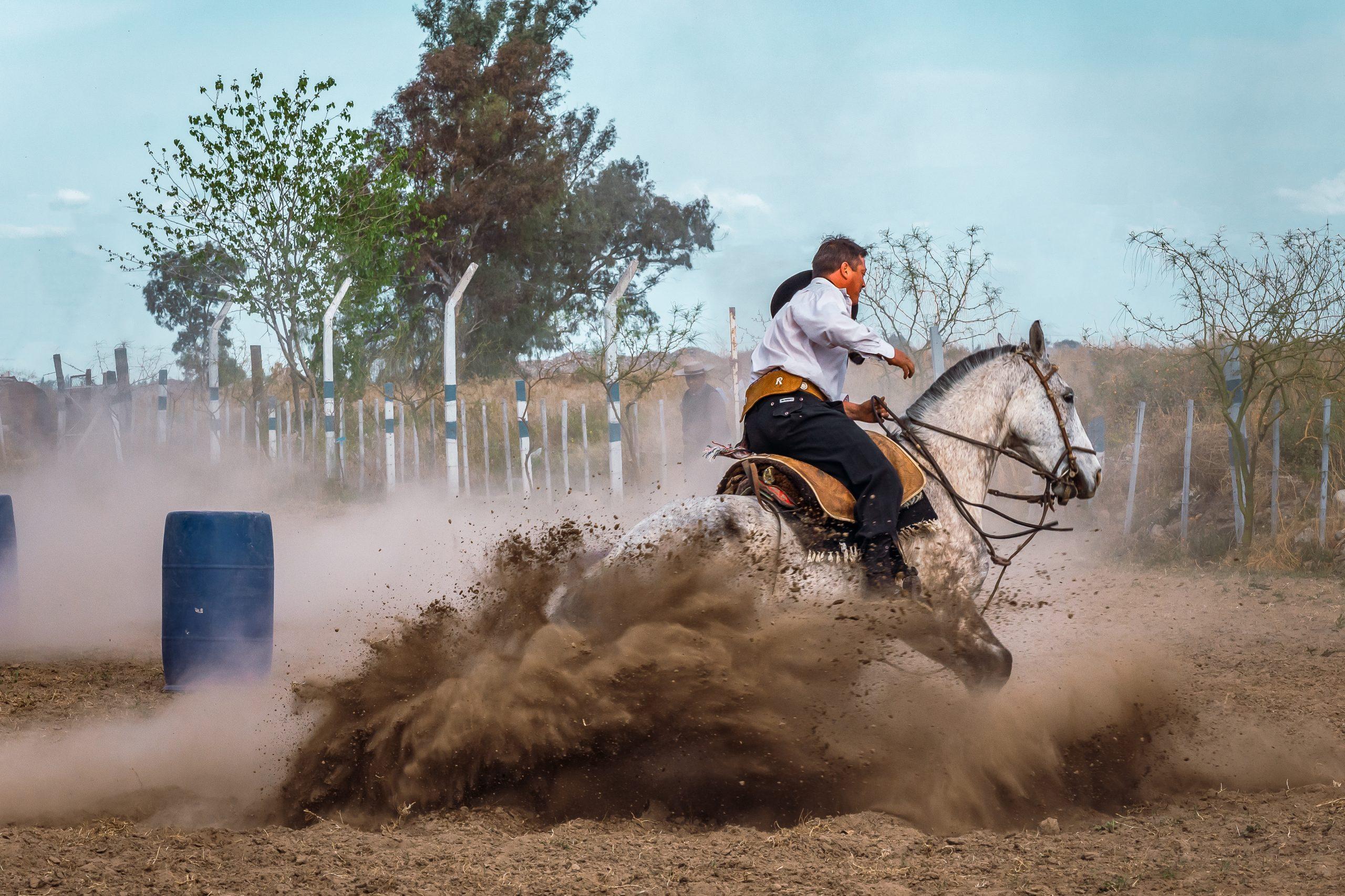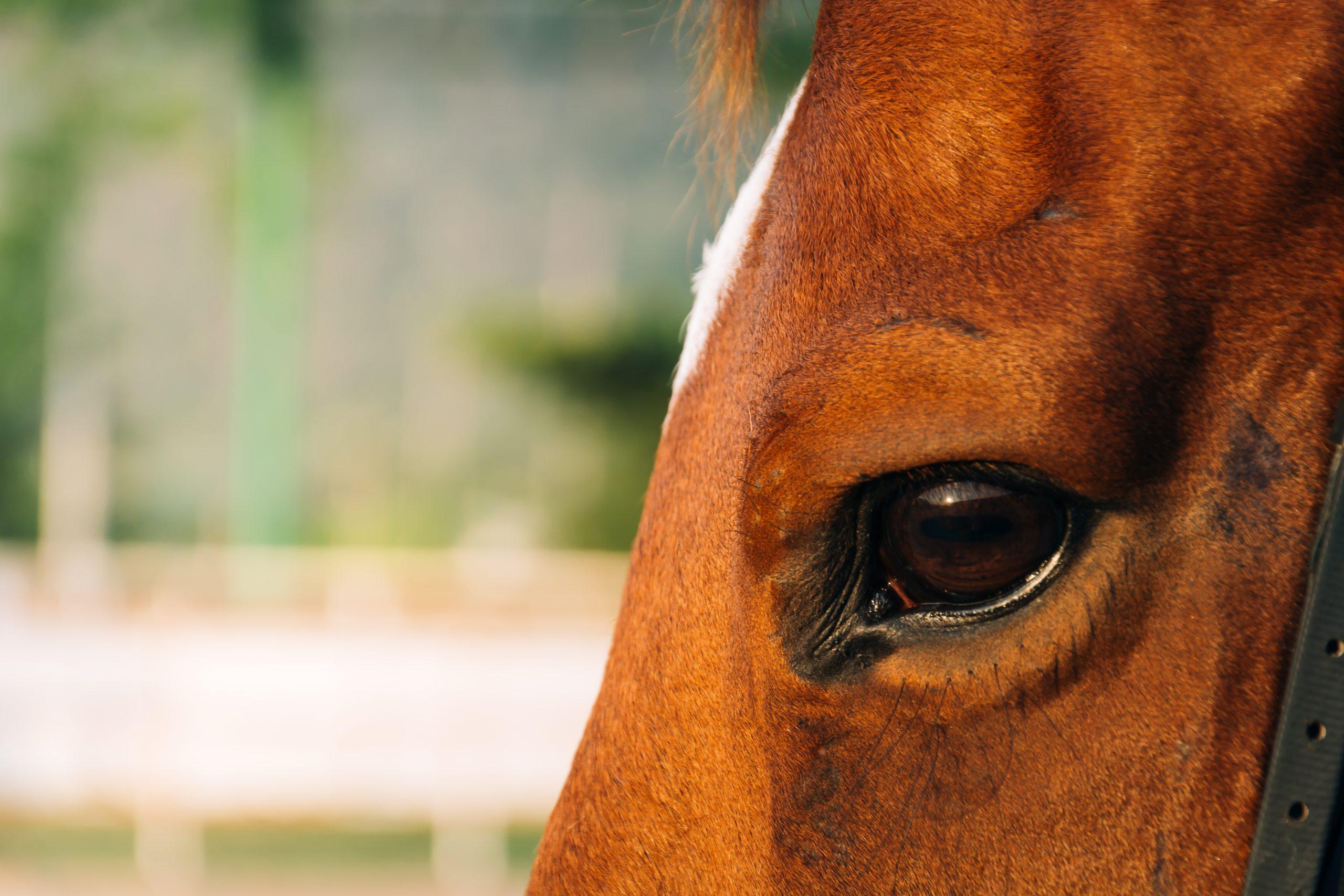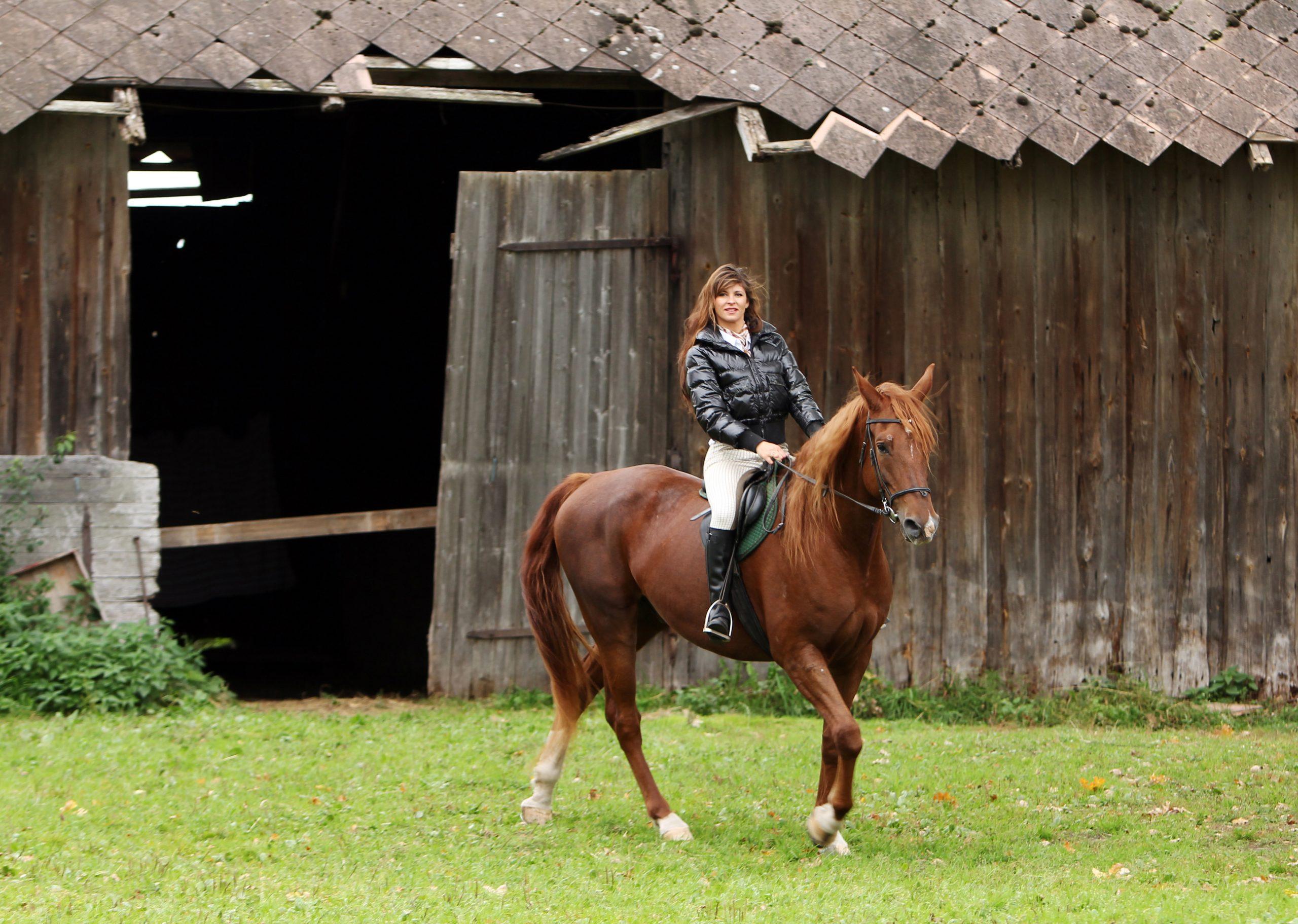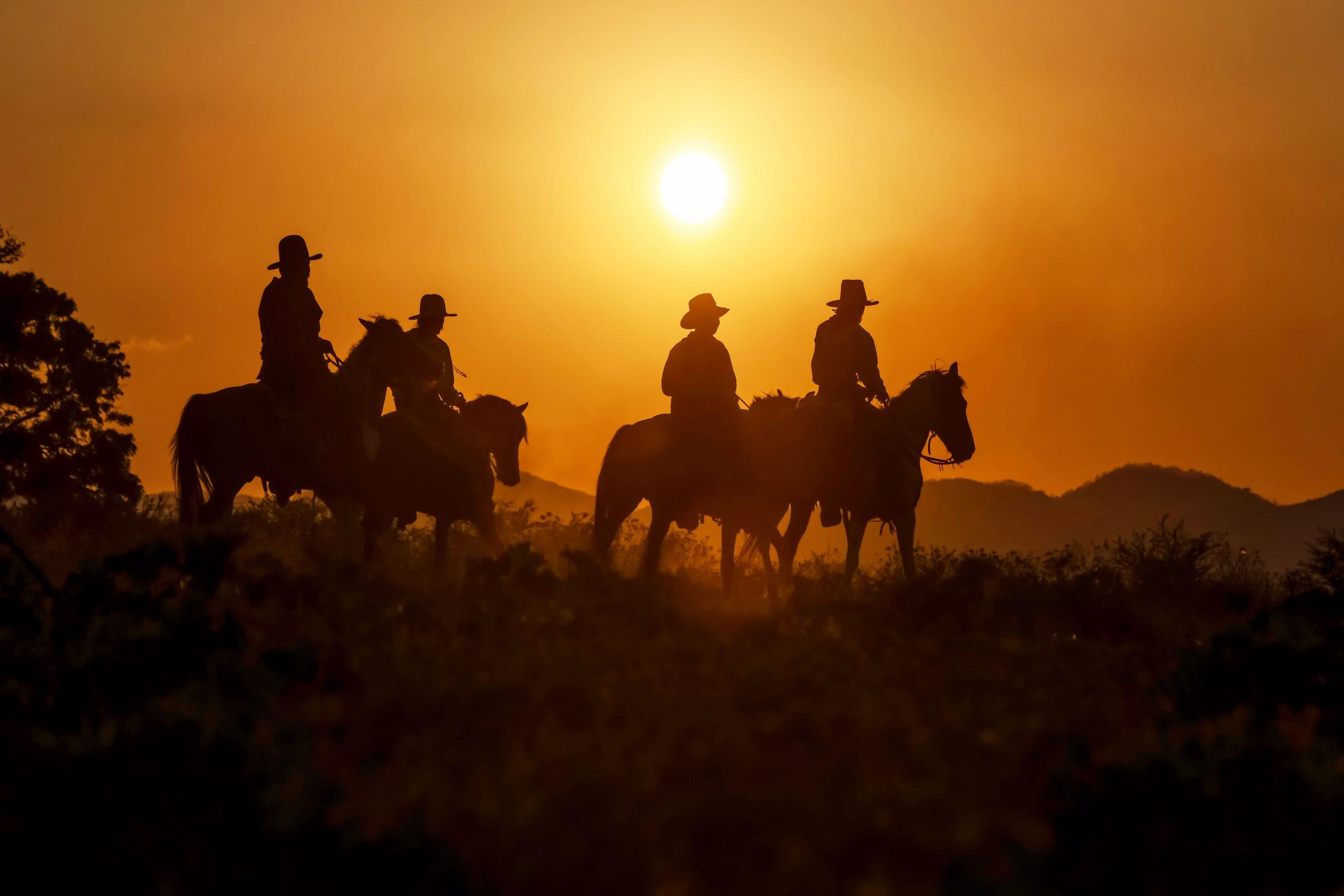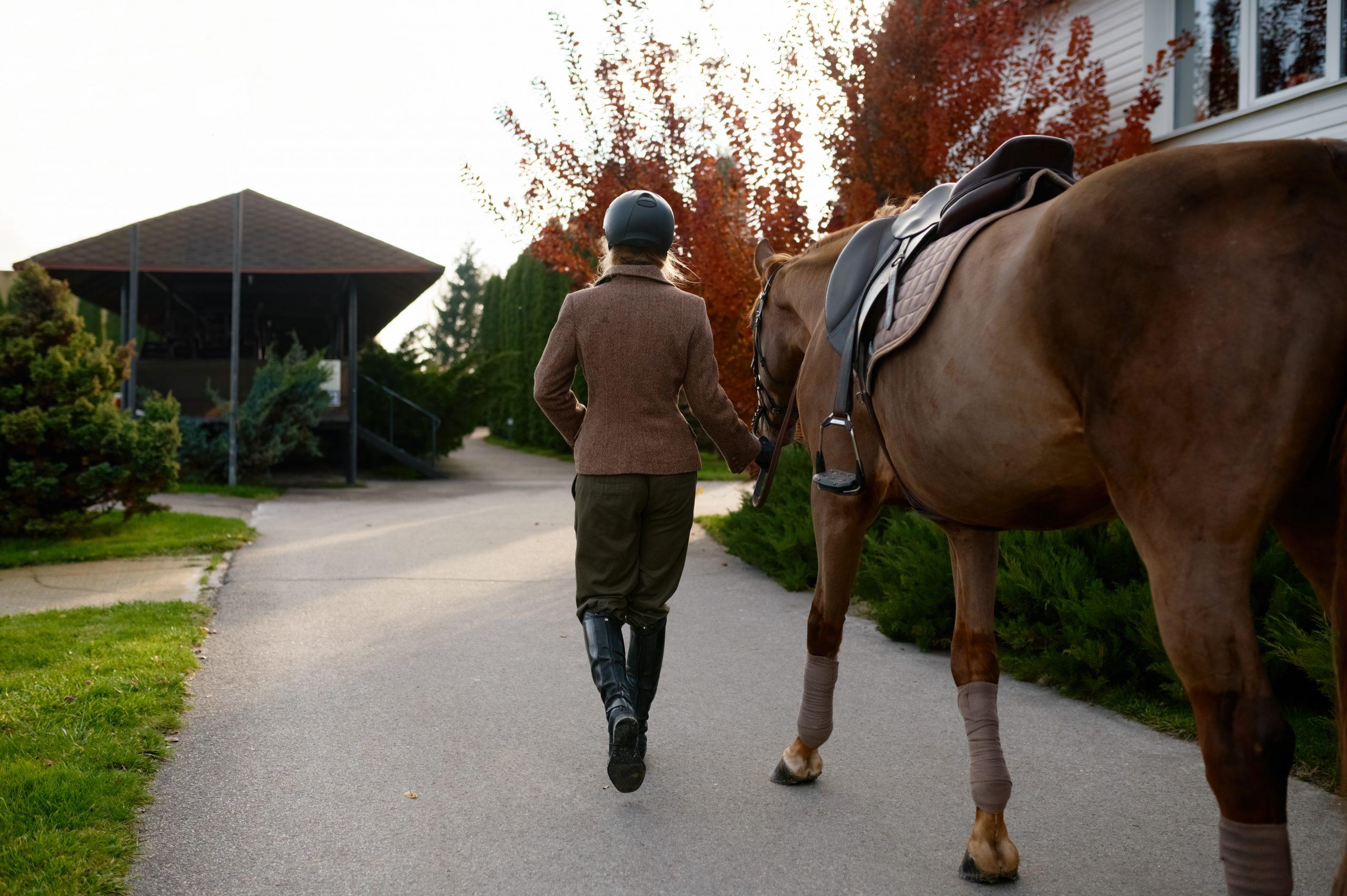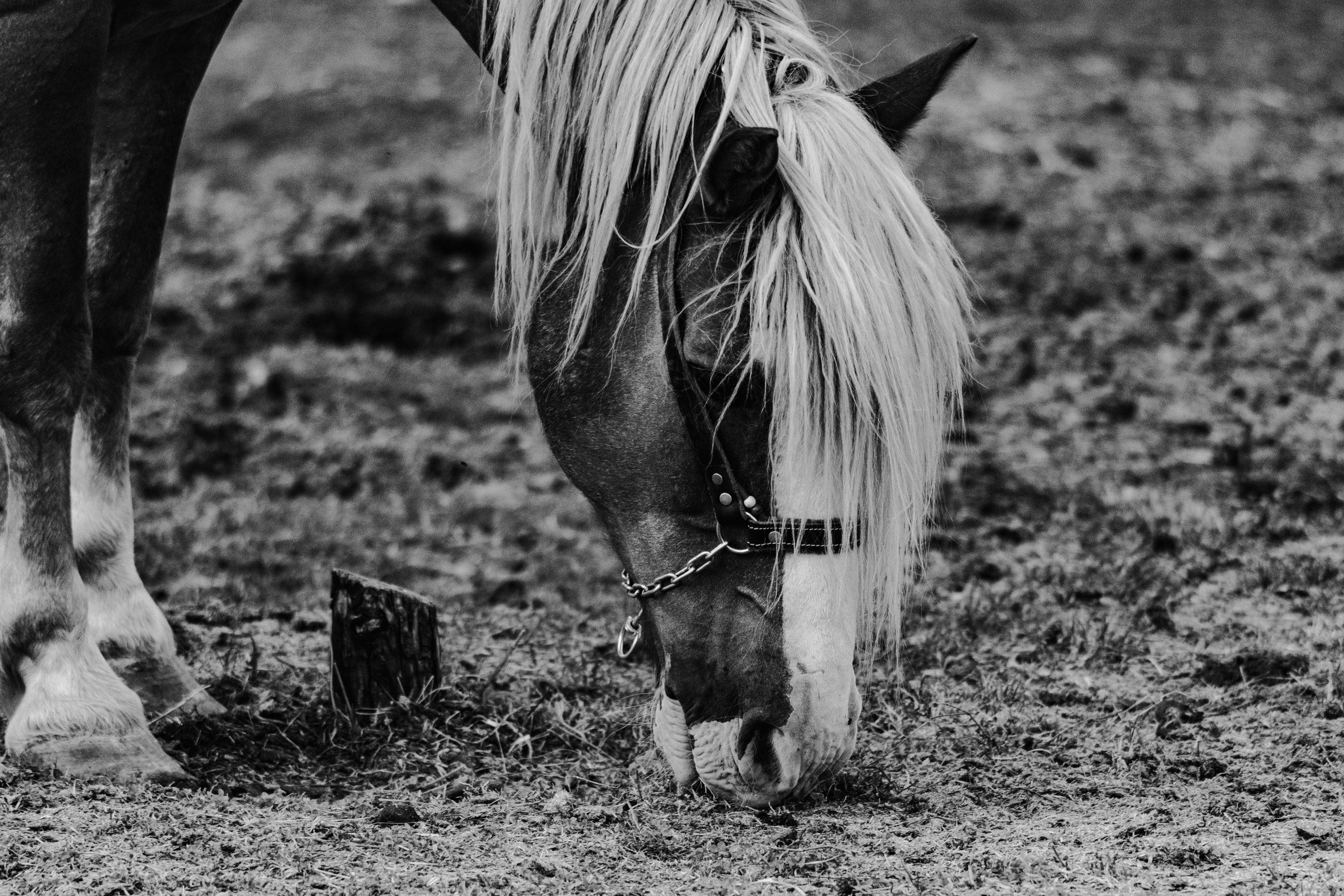Introduction to Cross Country Horse Riding
Cross country horse riding is an exhilarating sport that requires both the rider and the horse to be in peak physical condition. It involves navigating natural obstacles over varied terrain, including water jumps, ditches, and banks. The sport is a test of skill, speed, endurance and bravery.
One of the key aspects of cross country horse riding is the partnership between the rider and their mount. It’s essential that they work together as a team to tackle each obstacle safely and efficiently. A good rider will anticipate their horse’s movements and adjust their technique accordingly. Similarly, a good horse will listen to their rider’s commands and respond accordingly.
In addition to being physically demanding, cross country riding also requires mental agility. Riders must stay alert and focused throughout, constantly assessing the terrain ahead for potential hazards and adjusting their approach accordingly.
A fascinating fact about this thrilling sport is that it originated from fox hunting in Ireland in the 1800s. Initially called “steeple chasing,” riders would race across the countryside, jumping over fences and other obstacles in pursuit of foxes. Today, while still held as a competitive event around the world including Olympic games, many cross-country rides serve as leisurely trail rides that highlight beautiful landscapes as well as exciting jumps along their paths.
Saddle up with the right gear for cross country horse riding, unless you want to end up more bruised than a banana in a blender.
Essential Equipment for Cross Country Horse Riding
To ensure your safety during cross country horse riding, it is crucial to have the right equipment. In order to equip yourself with the essential gear, this section on ‘Essential Equipment for Cross Country Horse Riding’ with ‘Protective Gear, Riding Attire, Tack and Equipment’ as its sub-sections is your solution.
Protective Gear
Protective Riding Equipment for Cross Country Horseback
Protective gear is critical when it comes to cross country horse riding. It safeguards riders against injuries when they fall off the horse or encounter any other accident while navigating through difficult terrains and obstacles.
- Riding helmets: They offer protection for the head and prevent skull fractures and traumatic brain injuries.
- Body protectors: These vests shield the body from injuries, especially around the chest, back, and torso areas.
- Gloves: They help riders in maintaining a tight grip on the reins while minimizing blisters and abrasions on their hands.
- Knee pads: They provide extra cushioning to fasten impact absorption and support during jumps or falls.
- Riding boots: Proper footwear increases stability in the stirrups and protects feet from getting caught in stirrups during an unplanned dismount.
It’s essential always to ensure that any protective gear fits accurately as ill-fitted equipment could lead to decreased protection levels.
Pro Tip: Invest in high-quality protective gear that meets safety standards. Cheap gear might not provide adequate protection.
Who needs spandex when you can rock a pair of mud-stained jodhpurs?
Riding Attire
For the equestrian sport of cross country, appropriate attire is crucial for both safety and comfort. Here are some essential pieces of clothing to consider:
- Protective riding helmet: A sturdy, well-fitting helmet that meets safety standards is a must-have to protect your head in case of falls or accidents.
- Riding boots with good grip: Boots with strong, non-slip soles and proper ankle support are necessary for effective communication with your horse and preventing foot injuries.
- Comfortable breeches or jodhpurs: Made of durable, stretchy material, these pants allow for easy movement while maintaining a professional look.
- Breathable shirt or polo: Opt for lightweight, moisture-wicking fabrics that can keep you cool and dry even during intense physical activity.
It’s also important to consider factors such as weather conditions and terrain when selecting your riding attire. For example, in hot weather, lighter colors and fabrics can help you stay cooler; when riding on wet surfaces, waterproof clothing can keep you dry and comfortable. Choose the right apparel based on the particular circumstances.
To ensure maximum comfort and protection during cross country horse riding, riders must have appropriate attire. Additionally, it is recommended to carry a first aid kit for emergency situations along with any extra gear depending on the length of the ride. By investing in quality equipment and considering various influences like climate and surface condition when making choices on attire riders can enjoy safe rides with their majestic steeds. Who needs a GPS when you have a confused horse and a faulty compass?
Tack and Equipment
For successful cross-country horse riding, essential aspects to consider include the right gear and equipment. These consist of various objects and tools that ensure comfort and safety for both rider and horse.
Amongst the critical elements of tack and equipment is the saddle which provides a comfortable seat to help riders maintain balance while riding. A breastplate is also necessary as it helps keep the saddle in place, ensuring safety for the rider. Reins allow riders to better direct their horse’s movements while stirrups provide support for a stable ride.
Additionally, Hoof boots are crucial in keeping horses’ hooves healthy and preventing any potential injuries during riding. Riders can also benefit from appropriate clothing such as helmets, gloves, and boots made specifically for equestrian use.
While various gear and equipment play their specific roles, another essential tool is a durable GPS watch that tracks navigational routes through desolate terrains where cellular data may not be available.
One example of the significance of proper gear occurred when famed Kentucky Derby-winning jockey Walter Blum rode his mare on an early foggy morning neglecting to wear adequate reflectors or warning lights. Unfortunately, this proved fatal, resulting in unsafe collisions with cars over deteriorated visibility levels.
Therefore, these tools assist in keeping riders safe and avoiding unfortunate circumstances like these by ensuring they remain visible to society as they undergo training or competitive events whose commencement begins before dawn or lasts until after dark hours gifting them much-needed credibility and resilience during unforeseen eventualities.
Before hitting the cross country course, make sure your horse is well-trained and your insurance policy is up to date.
Preparations Before Cross Country Riding
To ensure a safe and fulfilling experience while embarking on cross country horse riding, it is essential to be well-prepared beforehand. In order to excel in this section titled “Preparations Before Cross Country Riding” with “Horse Health and Fitness Check”, “Rider Fitness and Preparation”, and “Course Familiarization and Inspection” as solution, we will go through these sub-sections one by one.
Horse Health and Fitness Check
To ensure optimal health and fitness of your equine partner before cross country riding, it is imperative to perform a comprehensive Equine Wellness Check. This will involve a thorough inspection of all aspects, such as physical condition, nutrition, hydration, and mental state.
To assess the horse’s health and fitness level, check if the horse has any visible injuries or swelling. Also, check if their hooves are in good condition and have been appropriately trimmed for endurance riding. Besides this, ensure they have received proper vaccinations. Furthermore, monitor their fluid intake and electrolyte balance to prevent dehydration.
It’s essential to evaluate the horse’s mental state too. Ensure that they are alert and responsive while not showing signs of stress or anxiety. Finally, you can analyze their fitness level by evaluating their heart rate during exercise sessions to determine their optimum workout length.
To keep your equine companion in good shape before a long-distance ride, make sure they receive sufficient nutrition with a balanced diet packed with carbohydrates and proteins for energy. Additionally, establish an appropriate workout program weeks in advance of the event to ensure prime physical readiness.
Time to dust off those spandex shorts and start training; we don’t want our horses to be the only ones breaking a sweat on that cross country course.
Rider Fitness and Preparation
For a successful cross country ride, riders need to be well-prepared both physically and mentally. The fitness and readiness of the rider are crucial factors that determine the safety and comfort of the journey.
It is advisable for riders to perform various exercises that improve their stamina, strength, and flexibility. Stretching and aerobic exercises help prevent muscle cramps or stiffness during long hours of riding. Proper hydration and nutrition help maintain energy levels throughout the journey.
Riders should also check their equipment thoroughly before starting the ride, including the bike, helmet, gloves, boots, etc. A well-prepared bike helps ensure a safe ride while comfortable clothing provides ease of movement throughout the ride.
Furthermore, familiarizing oneself with the route map or using a GPS system is essential for avoiding any unwanted obstacles on the journey.
Pro Tip: A well-planned practice session before embarking on a challenging cross-country ride can significantly increase one’s confidence and preparedness for this demanding adventure! If you don’t know the course like the back of your horse’s hoof, then you might as well be blindfolded and sent on a wild ride through a minefield.
Course Familiarization and Inspection
Familiarizing with the Pathway and Examining Road Safety
Before embarking on a cross-country ride, it is imperative to be familiar with the pathway mapping and road safety guidelines. Knowing the route’s terrain will enable riders to prepare themselves physically and mentally for any challenges that may arise along the way. It is also important to examine road safety through checking traffic signs, speed limits, and potential obstacles.
It is recommended to make notes of significant landmarks and focal points as guidelines during practice sessions or emergency situations. Additionally, check for significant changes in weather patterns or terrain conditions that can affect the riding experience.
Prior to starting a cross-country ride, colonial soldier Billy Dawes made significant efforts in familiarizing himself with pathways before traveling to alert Lexington of British troop movement in 1775. His meticulousness has become an epitome of responsible cross-country riding preparation we should all emulate today.
Surviving cross country riding is all about having the skills to handle any obstacle – and a little bit of luck (or a lot of padding).
Techniques and Skills for Cross Country Riding
To master the skills and techniques of cross country horse riding, you need to have a comprehensive understanding of jumping techniques, balance and body positioning, and control and communication with the horse. In this section, we will provide you with the solution through these sub-sections that will help you become a skilled rider.
Jumping Techniques
Jumping Skills in Cross Country Riding
To tackle cross country riding, riders must be equipped with the optimal jumping skills.
- First and foremost, riders must maintain essential balance while jumping over obstacles.
- They must approach each obstacle with the appropriate speed and angle to ensure a smooth landing.
- Riders also need timing and coordination to correctly execute a jumping motion.
- They must have an adequate understanding of their horse’s capabilities to select an appropriate spot for takeoff and landing.
In addition, it is important for riders to practice these skills continuously, improving their jumping abilities through practical experience.
To become skilled at Jumping techniques in Cross Country Riding, riders should prioritize honing their ability rather than passively reading information. Get started today!
Cross country riding is all about finding the perfect balance between gravity and not wanting to break your neck.
Balance and Body Positioning
Maintaining Equilibrium and Optimal Posture during Cross Country Riding
To excel in cross country riding, maintaining equilibrium and optimum posture is essential. This requires the rider to maintain stability throughout the ride, minimizing any sway or wobbling that may cause imbalance leading to accidents. Ensuring a perfect balance and optimal body positioning allows the rider maximum safety while enhancing performance.
Keeping the core strong and muscles active is imperative for balanced riding. By using appropriate muscle groups, a rider can maintain upright postures, optimize the center of gravity on their horse, and enjoy safe rides. The rider needs to have eyes up, looking ahead instead of down on their horse back. Proper position lowers rider’s weight that helps avoid unnecessary stress on horses’ joints.
Leg strength also plays an essential role in proper balance during rides – grasping firmly with heels to sustain correct posture. The toes should be pointed toward the horse’s shoulder while keeping legs steady re-enforcing a sturdy structure for the consistent flow of movements.
Having an expert trainer with extensive knowledge on riding techniques will prepare riders towards better performance over time without causing regular strains or sprains that may compromise their effectiveness in different cross country riding events they participate in.
True History:
Karl Milkenside recognized early the significance of optimal rider equilibrium by conducting several research studies over decades that aided riders’ effective stability measures through ongoing training sessions- developing techniques like Balance Saddle Fitting which aimed at ensuring precise ergonomic alignment allowing riders excellent sustained equilibrium control when riding outside aircraft practice fields. Karls’s methodology resulted in revolutionizing how riders view the importance of maintaining optimal position while mounted on a Horseback, contributing to an exodus from conventional normative training methods for their equestrian students both local and international alike aiming at increased safety measures when participating in various extreme sports featuring Cross Country Riding events.
Communicating with your horse is important, especially when they disagree with your choice of direction – nothing like a good game of tug-of-war to start the day!
Control and Communication with the Horse
Maintaining Equine Direction and Dialogue
Ensure accurate directional control and effective communication while horseback riding cross country. Use the reins, your legs, and voice to guide your equine partner throughout the course. Subtle aids can be used for specific movements, such as an extended leg to urge a forward motion. Consistency in cues keeps the horse on the same page.
Maintaining focus on rhythmic pacing throughout is imperative to successful cross country riding skills. Communication cues between rider and stallion include the use of body position balance shifting with ease while maintaining control even at high speeds in difficult terrain.
To gain trust and confidence from your horse, do groundwork before embarking on a cross-country ride with decisive leg aids and vocal affirmations. Horses are intuitive creatures; when treated right based on mutual respect, they will respond positively.
During my first ride through challenging countryside terrain, it became quite apparent that communicating effectively with the horse was paramount to success. The more attention the rider pays to equine comfort during rides enhances enjoyment for both parties involved in this thrilling activity of horsemanship.
Cross country riding is like a game of chess, except the game board is a course full of obstacles and your opponent is gravity.
Riding Strategies for Cross Country Courses
To master the art of cross country horse riding, you need to learn effective riding strategies. In this section, we will discuss riding strategies for cross country courses with a focus on three key aspects – pacing and timing, choosing optimal lines, and obstacle approach and execution. These strategies will help you navigate the course safely and efficiently while minimizing penalties and maximizing your score.
Pacing and Timing
When it comes to navigating cross country courses, the right pacing and timing are crucial for a successful ride. Knowing when to push your horse and when to conserve energy can make all the difference in your performance. One approach is to aim for a steady, consistent pace throughout the course, avoiding sudden bursts of speed that could tire out your horse too quickly.
To maintain this rhythm, pay attention to the terrain and adjust your speed accordingly. For example, take advantage of downhill stretches by letting your horse stretch out and gain momentum, but be sure to slow down for uphill sections. Additionally, keep track of your time and stay within the allotted time allowed on the course.
In addition to these tips, it’s important to remember that every course is different and may require unique strategies. Some courses may have challenging combinations or technical features that require careful navigation. Always walk the course beforehand to familiarize yourself with any tricky spots and adjust your plan accordingly.
Don’t miss out on potential success by underestimating the importance of pacing and timing in cross country riding. With proper attention to these factors, you can maximize your chances of achieving a smooth, efficient ride on any course.
Remember folks, choose your lines wisely – unless you’re trying to achieve an Olympic medal in tree-hugging.
Choosing Optimal Lines
To conquer a cross country course, choosing the ideal route is essential. Selecting the optimal path through the obstacles can make all the difference in achieving a successful ride. By analyzing terrain, considering horse ability and stride length, while also taking into account time allowed and jump distances, riders can optimize their lines to be as efficient as possible.
A rider must consider a variety of factors when selecting their riding route on a cross country course. Factors such as terrain, foliage growth, sunlight exposure and previous horse rides over those paths are just some examples of what one should keep in mind when deciding which way to take.
It’s important to note that riders will need to make decisions carefully about when they want to invite risk with scenarios like overtaking corners without penalties or knowing whether to choose a more direct line or take an easier but longer route around terrain features on the course. Ultimately, it’ll depend on what each rider is comfortable with and how much training they have done leading up to this point.
Remember you’re not alone – Watch other riders taking different paths through these same journey points for ideas before venturing onto cross country courses. Riders should always consider taking lessons from pro trainers who are expert at figuring out precisely what strategies work best for each individual pair of horses and riders. This helps avoid wasting precious time mapping out potential routes themselves.
Keep your eyes on the prize, but watch out for the jump or you might end up saying ‘hay’ to the ground.
Obstacle Approach and Execution
Approaching and Executing Obstacles
Cross country courses require riders to navigate through various obstacles. Proper obstacle approach and execution are crucial for a successful ride.
A 5-Step Guide to Approaching and Executing Obstacles:
- Plan Ahead – Before approaching an obstacle, understand how it fits into the course and what challenges it poses.
- Prepare Your Horse – Ensure that your horse is focused, responsive, and ready for the obstacle ahead.
- Choose Your Line – Identify the best line to approach the obstacle. Consider factors such as footing, incline, angle of approach, and potential hazards.
- Maintain Forward Momentum – Approach the obstacle with impulsion while maintaining control and balance.
- Execute with Precision – Make quick decisions based on your horse’s stride and adjust accordingly to complete the jump smoothly.
Additional considerations include assessing weather conditions, adapting strategies to specific obstacles or jumps, and practicing different approaches in training.
Stay Ahead of Competition
Mastering obstacle approach and execution can make all the difference in a cross country competition. By following these key strategies, riders can increase their chances of success and stay ahead of the competition. Don’t miss out on achieving your goals by neglecting this critical aspect of cross country riding!
People say horse riding is dangerous, but at least the horse knows what it’s doing.
Safety Tips and Guidelines for Cross Country Horse Riding
To ensure your safety during cross country horse riding, this segment will provide you with necessary safety tips and guidelines. Emergency procedures, weather and terrain conditions, as well as course and jumping safety regulations, are the key sub-sections that we will discuss in detail. Following these guidelines can help you enjoy a safe and fun ride.
Emergency Procedures
In case of unforeseen circumstances:
- Use the following guidelines to act promptly and ensure safety.
- Always carry a first aid kit with horse specific medical supplies.
- Alert someone immediately if you or your horse is injured or lost.
- Memorize emergency phone numbers for medical and veterinary services.
If a crisis occurs, it is crucial to be prepared. Consider these pointers:
- Maintain calm demeanor with clear communication in an emergency situation.
- Prepare realistic emergency scenarios for better comprehension.
- Ensure that all riding equipment is well-maintained and ready to use.
- Keep an avalanche transceiver at hand if the ride involves wintertime trails.
Stay safe!
Remember to always practice caution when cross-country riding. Cross country horse riding: where you can experience all four seasons in one ride – bring sunscreen, a raincoat, and snow boots just in case!
Weather and Terrain Conditions
Cross country horse riding can be a thrilling experience for riders. However, the weather and terrain conditions can have a significant impact on the overall safety of the ride. It is crucial to consider these factors before embarking on any journey.
When it comes to weather conditions, it is important to avoid riding during extreme temperature levels or rainfall as it can affect both horses and riders’ safety. Similarly, rough terrains like hills, muddy or slippery trails pose unique risks that need to be navigated with skill and caution. Riders must also pay attention to dips or hidden obstacles in the path that could lead to accidents.
Additionally, along with familiarizing oneself with the weather and terrain conditions beforehand, riders must dress appropriately for the weather while also wearing suitable protective gear. This includes helmets, gloves, boots with appropriate treads for grip, and high-visibility clothing.
Pro Tip: Always check local weather reports before scheduling your ride and pack your gear accordingly. Keep an eye on trail maps and lookout for any changes in weather conditions that might affect your journey’s safety.
Remember, the only good jump is a safe jump – unless you’re a rodeo clown.
Course and Jumping Safety Regulations
As equestrians, it is important to be aware of the necessary safety regulations when participating in cross country horse riding. Ensuring a safe course and jumping experience for both rider and horse requires proper preparation, execution, and maintenance.
One crucial aspect of ensuring safety on the course is maintaining appropriate fence distances. The height and width of jumps should correlate with the skill level of the rider and horse. Ground lines should also be considered to provide visual assistance to the horse while approaching the jump.
Additionally, there are certain regulations that must be met for obstacle construction and placement. Fences must be secured properly and free from sharp edges or protruding objects that could potentially harm a horse or rider in case of contact. The location of obstacles must also be strategically placed to maintain proper flow on the course, avoiding any bottleneck scenarios.
A careful eye should always remain on weather conditions before embarking on a cross country ride. Wet or muddy ground can lead to decreased grip and balance for horse and rider. This could cause increased risk when passing obstacles, such as banks or water crossings.
In one situation, a novice rider attempted jumps without proper supervision, leading to serious injury due to a lack of experience in controlling their horse’s speed and direction. Starting small with basic exercises before progressing to more advanced techniques would have prevented this accident.
As riders who participate in cross country events, following these safety guidelines will ensure not only your personal security but also improve your overall experience in this exciting discipline. Even with all the safety tips, remember that at the end of the day, horses are still unpredictable creatures with minds of their own.
Conclusion and Final Thoughts on Cross Country Horse Riding.
After analyzing the benefits of cross country horse riding, one cannot help but acknowledge its significance in cultivating discipline and building endurance. This physically demanding equestrian sport calls for riders to be alert, focused, and agile while traversing various terrains at a fast pace. The thrill of jumping over obstacles or galloping through open fields is unmatched as it provides an immersive experience with nature.
Apart from the physical aspect, cross country horse riding also fosters emotional connections between the rider and their horse by promoting trust and loyalty. The rider must be in sync with their horse’s movements to successfully navigate through challenging courses while maintaining a good pace. This sport also allows riders to bond with fellow enthusiasts and gain a sense of community.
It’s essential to note that Training for this sport requires a combination of skills that are acquired over time through dedication and patience. Proper gear, including protective equipment for both the rider and the horse, is an absolute necessity. In addition, Respect for nature is crucial as it ensures sustainability.
In history, Cross Country Horse Riding was developed centuries ago when messengers rode through countries to deliver information quickly before telegrams existed. It evolved into a leisurely activity for gentlemen seeking adventure. Now regarded as both sport and recreation, Cross Country Horse Riding still stands out as a thrilling activity that offers physical fitness benefits whilst promising unforgettable memories.

